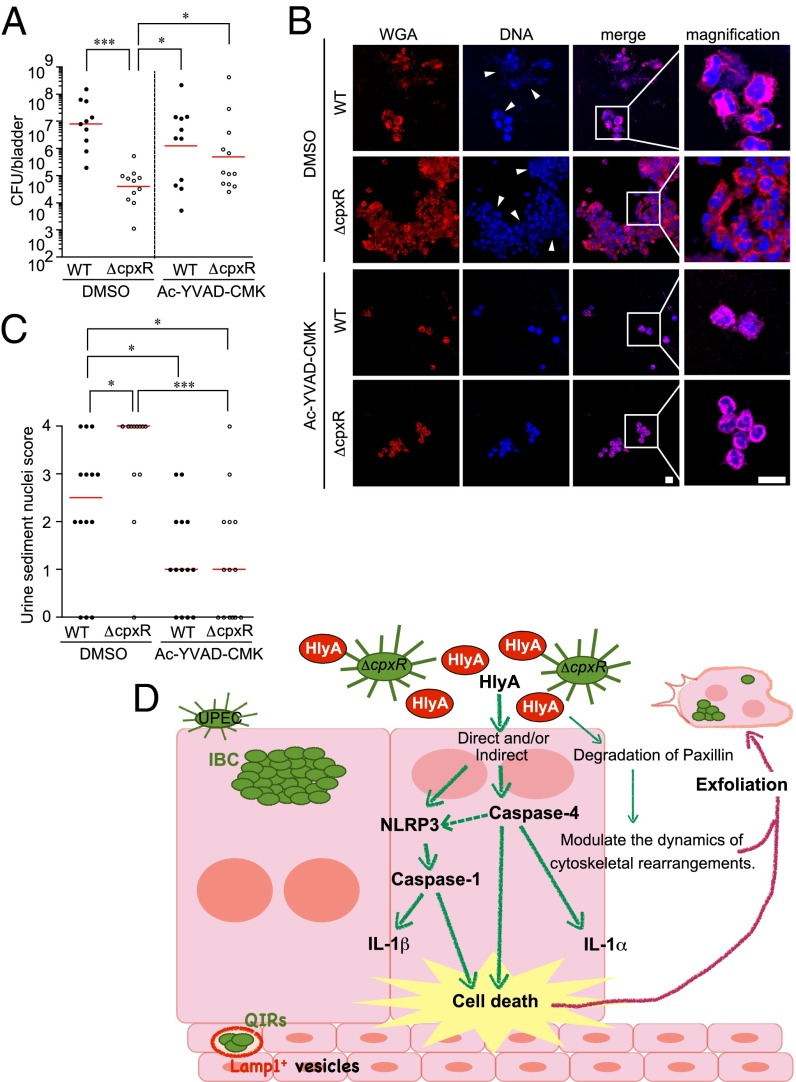Fig. 6.
ΔCpxR acute virulence is restored by inhibition of Caspase-1. (A) C3H/HeN mice (n = 4 for each group) were inoculated transurethrally with the indicated strains in the presence of DMSO or Ac-YVAD-CMK (Caspase-1/mCaspase-11 inhibitor). After 16 hpi, bladder specimens were homogenized and plated on LB plates. Colonies were counted to determine the number of bacteria per bladder. Data are representative of three independent experiments. All statistics shown are the results of a two-tailed Mann–Whitney t test. Horizontal bars indicate the geometric mean. (B) C3H/HeN mice (n = 4 for each group) were inoculated transurethrally with the indicated strains in the presence of DMSO or Ac-YVAD-CMK. After 16 hpi, urine sample were collected. Fixed urine samples were stained with WGA specific for the host cell surface (red) and TOPRO3 (blue). Arrowheads indicate bacteria. (Scale bar: 10 μm.) (C) Polymorphonuclear leukocytes and host nuclei scores of the urine sediments were determined at 16 hpi. Data are representative of three independent experiments. The statistics in C were determined by a two-tailed Mann–Whitney t test. The horizontal bars indicate the geometric mean. (D) Model for UPEC pathogenesis. UPEC HlyA triggers cell death and release of IL-1α and IL-1β. The dashed arrow indicates that it is not known how Caspase-4 synergizes with the assembled NLRP3 inflammasome to regulate Caspase-1 activation. *P < 0.05; ***P < 0.005.

